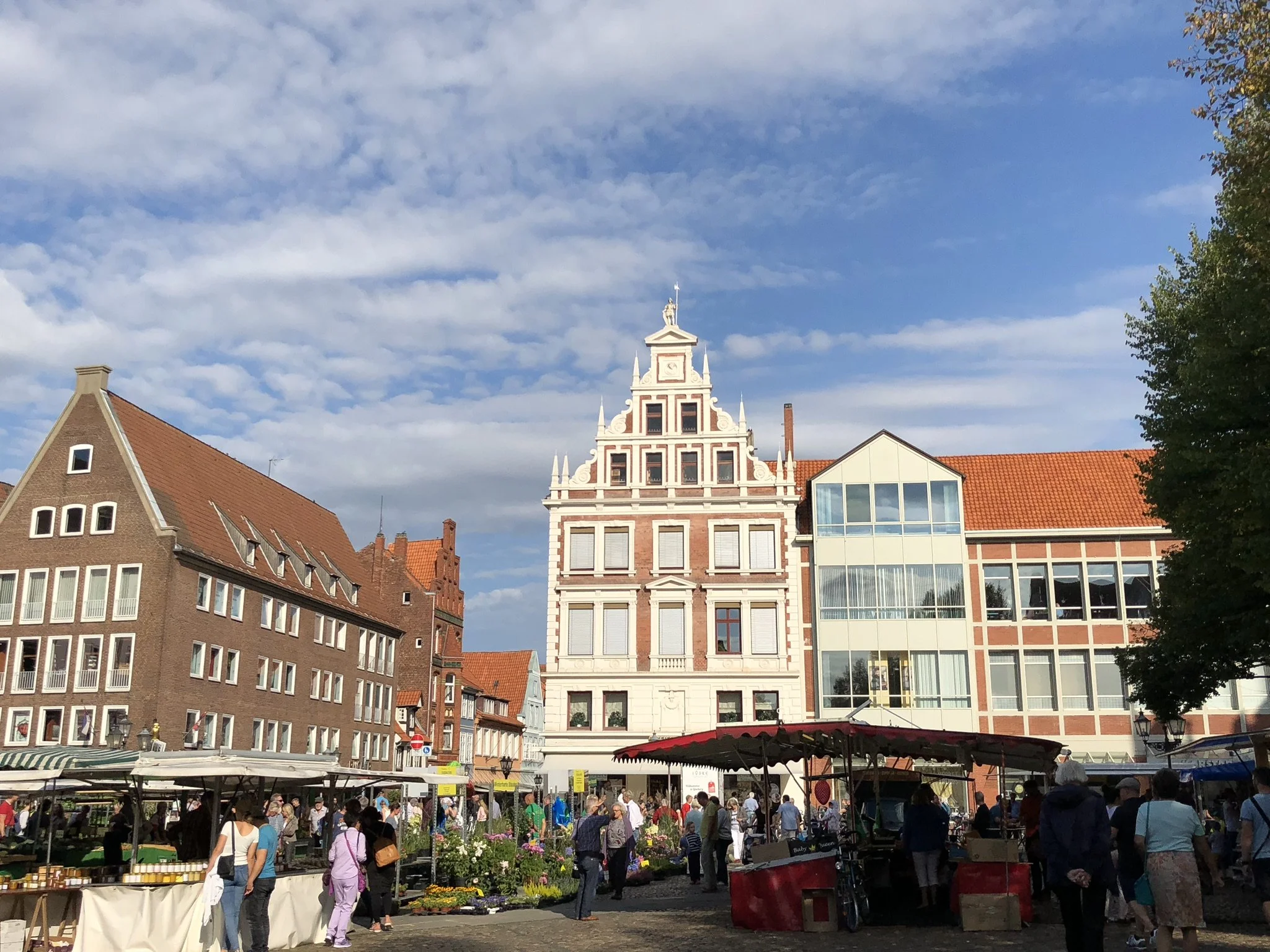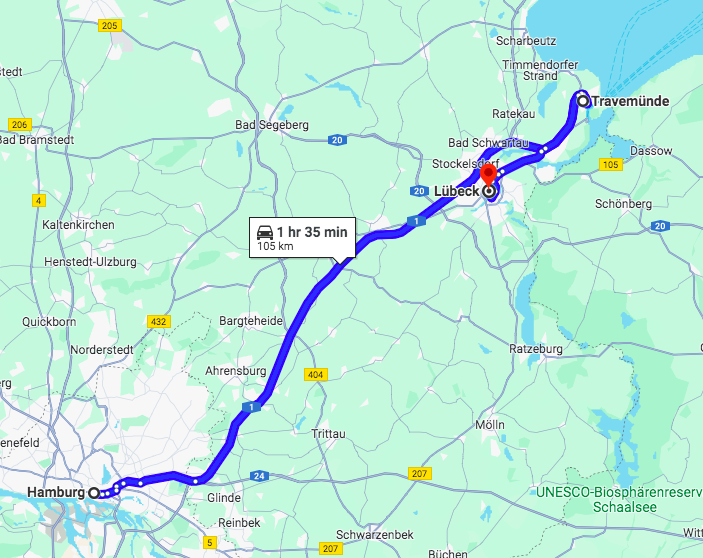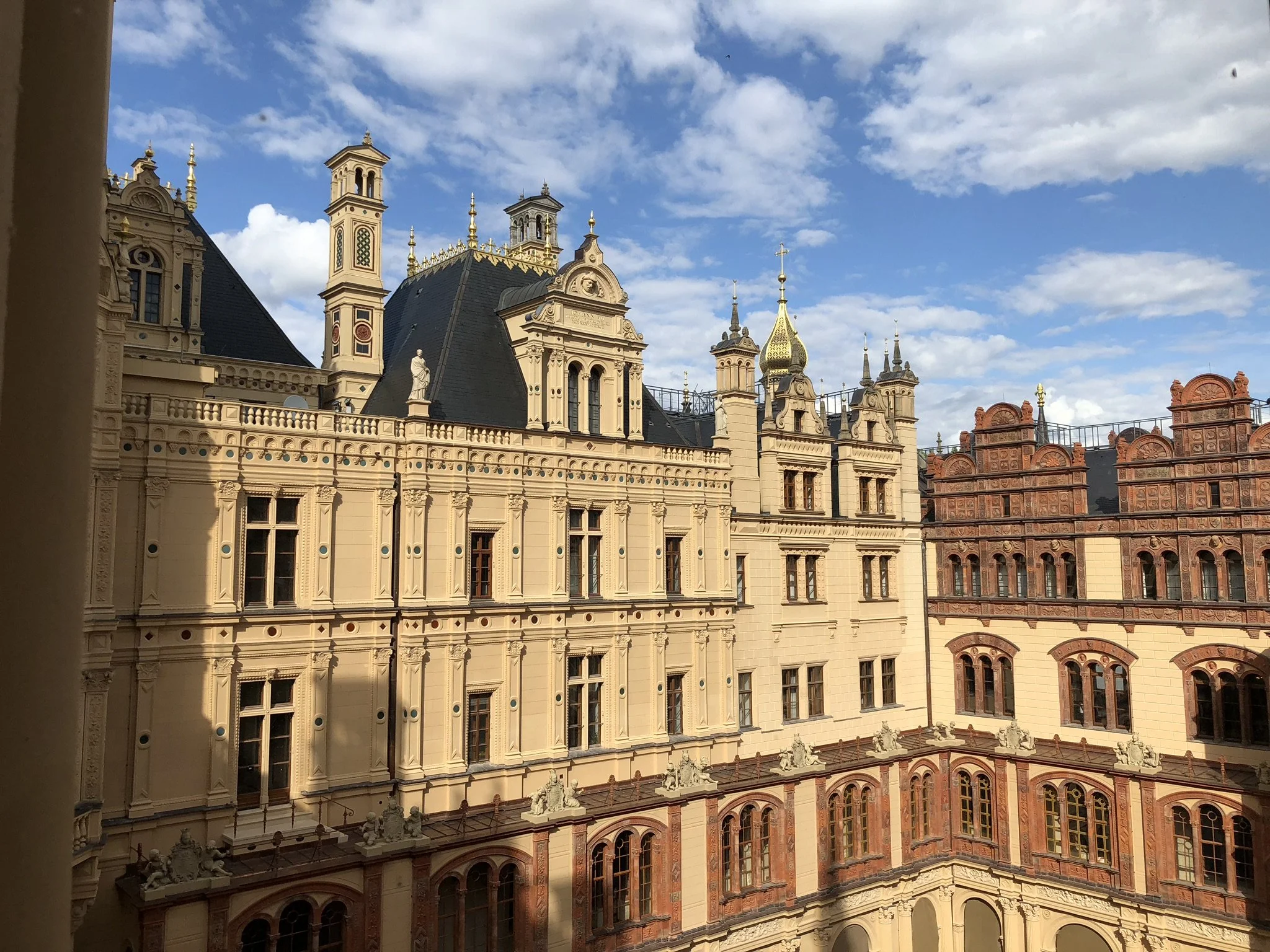Medieval Magic & Marzipan: Uncover Lüneburg, Lübeck & Schwerin's Charms
Last updated February 17, 2024


Are small towns in Germany worth a visit? Absolutely!
When I travel to Germany, I usually stay in Hamburg which is a fantastic city that you can explore for days! But if you're staying for more than a week, it might be good to venture out and explore the small charming towns just a short distance away. Every time I visit, my sister and my brother-in-law would take me to explore a lovely little town outside of Hamburg. And each trip, I get to see something new and discover more of Germany beyond tourist’s trail.
Just an hour's drive from Hamburg lie hidden gems waiting to be discovered: Lüneburg, Lübeck, and Schwerin. I want more people to experience the charm of these lovely towns, each with its unique character. And the best part? They're easily explored on foot, making them perfect for a breezy day trip.
The journey itself is delightful, offering scenic views and beautiful nature along the way. So, next time you find yourself in Hamburg, consider venturing beyond the city limits and uncovering these little gems. Who knows, you might just fall in love!
1. Lüneburg
Founded in the 9th century, Lüneburg thrived as a center of salt production, earning it the nickname "the town of white gold." Lüneburg is a captivating town with rich history, culture, and natural beauty. Its rich history is evident in its charming architecture, with many half-timbered houses and medieval churches like St. Michael's Church. The town has a delightful blend of medieval charm, modern vibrancy, and a relaxed atmosphere, making it a perfect destination for travelers seeking an authentic German experience.
Suggested activity for one day trip:
Explore the town’s architecture and history by foot
Luckily, Lüneburg was not destroyed in the past through wars. So you can expect to see many historic buildings throughout the the Old Town (Altstadt) and city center. You could simply spend a whole day here. You can start your journey at Stintmarkt at Old Harbor which is my favorite spot to look at the river and observe how the vibrant the town was. In summer, this is best location to sit down and drink some beer.
Near by, don’t forget to check out the old crane which is Lüneburg’s secret landmark. A bit of history, back in 1346, a crane was used to lift heavy loads with two wooden wheels. When Lüneburg got a railway in 1846, the crane was no longer needed. Now it has become a beloved memorial in Lüneburg, still working and cared for by the locals. From there, you can head to the Town Hall, which is the largest medieval town hall in Northern Germany. It's a mix of Middle Ages and Renaissance styles and is known for its beautiful interior and decorations, making it a top attraction in Lüneburg. On the day we visited, there was a fun farmer’s market which I believe they have it every Wednesday and Saturday, selling fresh produce from local farmers.
From here, take a stroll through town to the Square, Platz Am Sande. Standing tall in the Square’s background is St. John's Church. The Square is another great spot to sit down eat or have coffee as there are many shops and cafes here. In summer time, many people come here to enjoy a relaxed boat ride or kayaking at Ilmenau River that runs through town. With the town being relatively small and pedestrian-friendly, I really enjoyed exploring and walking. And I think you will love it too!
Nearby attractions:
German Salt Museum: Learn about interesting history of salt mining in at this museum.
Kloster Lüne: Visit a beautiful monastery from 1172. Enjoy the gardens, stunning architecture, and learn history.
Lüneburg water tower observation deck: Come here for panoramic views of the city.
For more information, visit Lüneburg Tourism.
Special thank you to my sister and my brother-in-law for showing me around.
2. Lübeck
Lübeck is a lovely town located along the banks of the Trave River. Founded in 1143, this city flourished as the heart of the Hanseatic League, a medieval commercial and defensive confederation of merchant guilds and market towns in Central and Northern Europe.
It played a major role in shaping the economic and political landscape of the region. In 1987, Lübeck's Old Town (Altstadt) received UNESCO World Heritage Site, making it a living testament to the city's glorious past.
Suggested activity for one day trip:
Visit Holsten Gate & enjoy the original marzipan at Café Niederegger
While in Lübeck, wander through the cobbled streets, marvel at the Gothic architecture, and make sure to visit the St. Marienkirche are a must! You'll witness its amazing beauty and understand why it earned UNESCO status. Beyond the cathedral, the town’s highlight is Holstentor Gate, Lübeck's most recognizable landmark. Built between 1464 and 1478, it boasts twin towers topped with conical slate roofs and a fortified gatehouse, showcasing Brick Gothic architecture at its finest. The two round towers symbolize the city's power, while the central wing reflects its role as a trading hub. Master builder Hinrich Helmstede designed this impressive site. While primarily built for defensive purposes, the Holstentor Gate also served as a prestigious entrance to the city. The inscription "Concordia domi foris pax" (Concord at home, peace outside) adorns the archway, highlighting Lübeck's ambition for internal harmony and external peace.
Second stop after sightseeing: Indulge in Marzipan!
You might be wondering, what is Marzipan and why should you try it here in Lübeck? Well, it's a delightful sweet confection made with almond meal, egg whites, and sugar. Its smooth texture and slightly grainy bite offer a nutty and sweet flavor that's truly satisfying.
While the origin of this treat remains a bit of a mystery, Lübeck has earned the title of "Marzipan City" for its renowned production of high-quality marzipan. During its time as a key trading hub during the Hanseatic League (13th-15th centuries), Lübeck secured access to top-notch ingredients like almonds from the Middle East. Over the years, marzipan production became deeply ingrained in Lübeck's cultural identity.
For the best marzipan experience, look no further than Café Niederegger. Founded in 1806 by Johann Georg Niederegger, a pastry chef who played a crucial role in establishing Lübeck's marzipan reputation, this cafe is an institution and a must-visit spot. They offer an array of marzipan delights, from classic bars to creative pastries and cakes featuring marzipan fillings and decorations. Relax and indulge in their delicious creations! And don’t forget to visit Marzipan Museum to learn more about history and explore the artistry of marzipan making.
For more information, click here.
Marzipan is moldable so artist can use it to create intricate sculptures.
Nearby attraction:
On the way to Lübeck, you can make a stop at Travemünde before or after visiting Lübeck. Travemünde is a mini Sun, Sand, and Seascapes. This charming seaside resort is a short ride to Lübeck, making it a perfect stop for your road trip!
The main highlight is Travemünde Beach, which stretches 4.5 kilometers of white sand along the Baltic Sea. If you have time, sit down for a nice seafood meal at Fisherman's Harbor.
3. Schwerin
This is where Fairytale Charm Meets Enchanting Lakefront. Schwerin is the capital of a state in northeastern Germany, next to the Baltic Sea. It has a mix of coastal scenery, old towns, and peaceful nature.
Suggested activity for one day trip:
Visit Schwerin Castle and relax by the lake
Schwerin Castle is a majestic castle and undoubtedly the crown jewel of Schwerin. Schwerin Castle is a fascinating blend of architectural styles, encompassing the medieval period, the Renaissance, and the neo-Renaissance. This visually captivating structure holds significant historical value. Inside, the richly decorated rooms offer a glimpse into the luxurious lives of its former residents. Explore these opulent spaces, marvel at the impressive Throne Room, and soak in the breathtaking views from the tower.
My favorite aspect of the castle is its fairytale-like setting, perched on an island in Lake Schwerin. Imagine climbing to the top of the tower and being rewarded with panoramic views of the surrounding landscape. Throughout the year, the castle hosts special events and exhibitions, ranging from concerts and theatrical performances to themed tours and historical reenactments. Check the calendar before your visit to add an extra layer of magic to your experience.
Nearby attractions:
After exploring the castle, venture into the charming Altstadt (Old Town), wander through the majestic Schwerin Cathedral, and discover the historical Old Town Hall.
I hope these charming northern gems—Lüneburg, Lübeck, and Schwerin—inspire your wanderlust and make you want to explore more of Germany! I loved visiting all three destinations and can't wait to uncover more small-town gems in Germany.
When I do, I'll be sure to share my stories and journeys with you again. Until then, auf Wiedersehen!
































